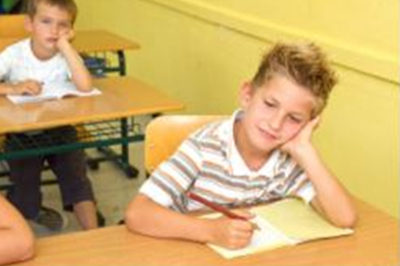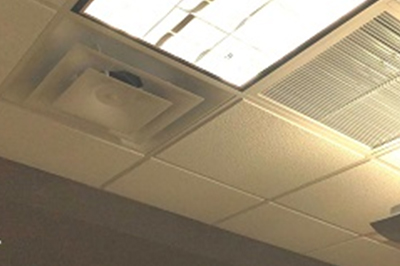Thermal Comfort Extra Features
Thermal Comfort Extra Features
Color of Wall, Ceiling, and Floors
Colors used for walls, ceilings, and floors that can absorb the daylight and influence the room temperature.

Thermal Comfort and Students Performance (TC.SP)
The relationship between thermal comfort and classroom temperature on student outcomes.
From the supporting literature (linked above), it was suggested that temperature influences students outcomes. There is a relationship between classroom thermal comfort and students behavior and academic performance. Two factors have been identified for influencing thermal comfort of school buildings. They are the structural and cosmetic factors, and they also influence students behavior and learning.
Thermal Comfort and Healthy Learning Environment (TC.HLE)
The association of thermal comfort, healthy learning environment, and green school buildings.
From the supporting literature (linked above), healthy Learning Environment ensures proper thermal comfort. There is a relationship between health school environment and students achievement. Health and caring school environment support learning, and students/teachers relationship. Outdoor areas and common spaces are components of a caring school environment. Students, parents, and teachers support a healthy school environment. Four (4) components of successful school have been identified, they are; caring, safety and structure, academic rigor and support, and participation.
Ventilation (TC.V)
From the supporting literature (linked), there is a consensus among authors that improved classroom ventilation is associated with improved students health and performance. Improved ventilation is associated with the increased air exchange rate and a corresponding decrease in the concentration of airborne pollutants. Location, building materials, construction and maintenance activities, and contamination in humidity are some factors that influence classroom indoor air quality.
References
1. Blackmore, J., Bateman, D., Loughlin, J., O’Mara, J., & Aranda, G. (2011). Research into the connection between built learning spaces and student outcomes: Literature Review. Department of Education and Early Childhood Development, State of Victoria.
2. Blincoe, J.M (2008) The Age and Condition of Texas High Schools as Related to Student Academic Achievement. College of Education, University of Texas at Austin.
3. Daisey, J. M; Angell, W. J; Apte, M. G (2003) Indoor air quality, ventilation and health symptoms in schools: an analysis of existing information. Indoor Air, 13.
4. Duyar, I (2010) Relationship between school facility conditions and the delivery of instruction: Evidence from a national survey of school principals. Facilities Management, 8(1), 8 – 25.
5. Earthman, G.I (2004) Prioritization of 31 criteria for school building adequacy. American Civil Liberties Union Foundation of Maryland. Retrieved in 2016, Baltimore, MD.
6. Earthman, G.I (2015) Research on Green Schools and Student Performance. Marketing the Green School: Form, Function, and the Future, Information Science Reference, Hersey, PA, 38-53.
7. Evans, G.W (2006)] Child Development and the Physical Environment. Annual Review of Psychology, 57, 423-51.
8. Fisher, Kenn (2000) Building Better Outcomes: The Impact of School Infrastructure on Student Outcomes and Behaviour. Department of Education, Training and Youth Affairs, Australia.
9. Jo Meacham Associates (2001) Architectural/Historical Survey of Oklahoma City’s Historic School Buildings. Jo Meacham Associates, funded by the Kirkpatrick Foundation, Oklahoma City, Oklahoma.
10. Lewis, L; Snow, K; Farris, E; Smerdon, B; Cronen, S; Kaplan, J; Greene, B (2000) Condition of America’s Public School Facilities: 1999 (NCES 2000-032). National Center for Education Statistics U.S. Department of Education, Washington D.C.
11. Lumpkin, R.B; Godwin Jr., R.T; Hope, W.C; Lutfi, G (2014) Code Compliant School Buildings Boost Student Achievement. SAGE Open, 1-8.
12. Tanner, C. K. (2014). Green School Characteristics, Sustainability, and Student Learning. Marketing the Green School: Form, Function, and the Future. Information Science Reference, Hersey, PA, 25-37.
13. Tanner, C. K. (2015) Green School Characteristics, Sustainability, and Student Learning. Marketing the Green School: Form, Function, and the Future. Information Science Reference, Hersey, PA, 25-37.
14. Salleh, N. M., Kamaruzzaman, S. N., Sulaiman, R., & Mahbob, N. S. (2011). Indoor air quality at school: ventilation rates and it impacts towards children-a review. In 2nd International conference on environmental science and technology (Vol. 6, p. 41).
15. Sleegers, P.J.C; Moolenaar, N.M; Galetzka, M; Pruyn, A; Sarroukh, B.E; van der Zande, B (2013) Lighting affects students’ concentration positively: Findings from three Dutch studies, Lighting Research & Technology, 45, 159–175.
16. Smedje, G., & Norbäck, D. (2000). New ventilation systems at select schools in Sweden—effects on asthma and exposure. Archives of Environmental Health: An International Journal, 55(1), 18-25.
17. Vardoulakis, S; Dimitroulopoulou, C; Thornes, J; Lai, K. M; Taylor, J; Myers, I; Heaviside, C; Mavrogianni, A; Shrubsole, C; Chalabi, Z; Davies, M; Wilkinson, P (2015) Impact of climate change on the domestic indoor environment and associated health risks in the UK. Environ Int, 85, 299-313.






